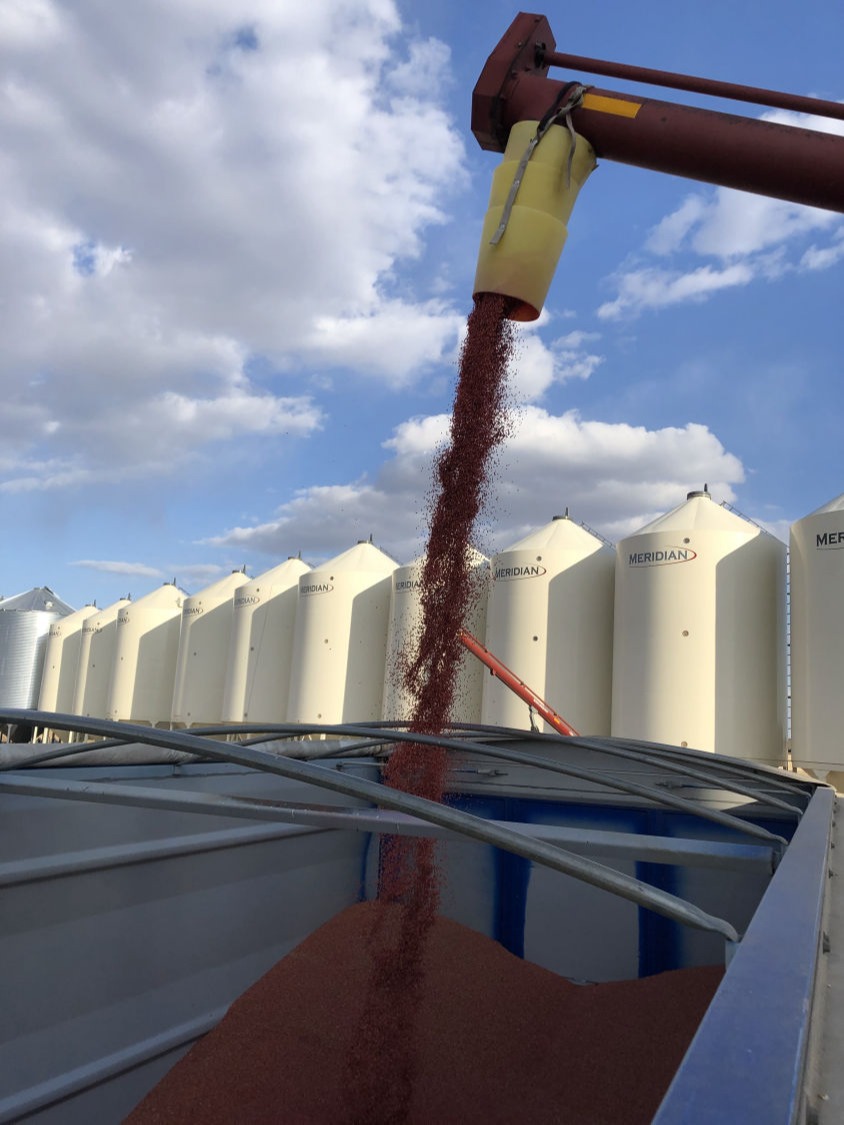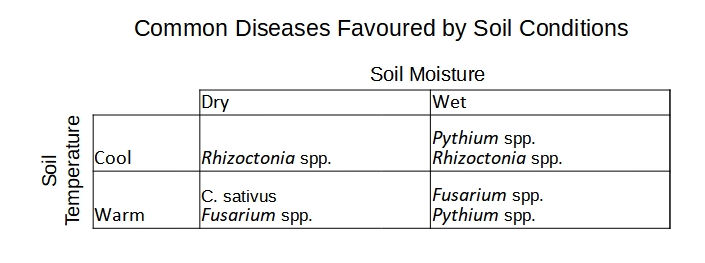
So when should you use a seed treatment?
1. Tight crop rotations increase the risk for seedling diseases [1], particularly if you grow similar crop types successively [2].
2. Using farm saved seed, especially if the seed is old or has been previously infected [1]. Diseases such as alternaria, bunt, fusarium and smut can be seed-borne [1][2][3].
3. Poor growing conditions, like cool soil temperatures, can delay emergence giving diseases an opportunity to infect [2]. Early seeded cereals are a good idea to treat for this reason. If growing conditions at seeding are ideal, seed treatments may not be necessary [2]!
Soil and weather conditions at the time of seeding favours the development of specific diseases. The following chart is adapted from the Government of Manitoba [1] and Bayer Crop Science [4].


